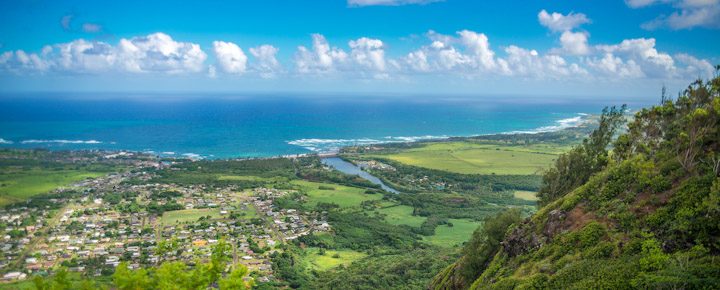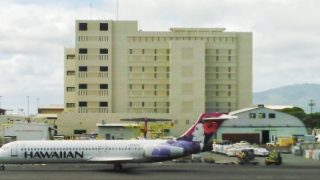We half thought about entitling this article, “Don’t Leave Home For Hawaii Without Your Detection Pen!” If you thought the worst Hawaii vacation challenge was cost, here is a new one: counterfeit bills have now entered the scene. Here’s what to watch out for on your Hawaii vacation.
When the Kauai Police Department issued a reminder to stay vigilant against counterfeit money, we were honestly surprised. That led to more ways to spot real currency than we’d ever considered possible. Our solution is simplistic, and you’ll see that below.
Since the beginning of the year, 14 counterfeit currency incidents have occurred on Kauai, highlighting problems and solutions that extend far beyond the idyllic Garden Island.
“We encourage anyone who suspects they have received counterfeit money to report it to the police immediately. Timely reporting helps us track these incidents and apprehend those responsible.”
Assistant Police Chief Kalani Ke.
Kauai counterfeit money situation.
The rise in counterfeit incidents has put visitors, residents, and businesses on alert. The police provided several tips to help people avoid falling victim to counterfeit schemes:


Do you know your U.S. currency?
Have you familiarized yourself with security features, including watermarks and security threads on various bills in circulation? Confession: we have not.
1. Watermarks are located to the right of the bill’s portrait and are visible from both sides when held up to the light. On newer bills, the watermark image matches the one on the bill.
2. Security threads are embedded vertically to the left of the portrait, and the text indicates the bill’s denomination (e.g., “USA 100”). They are visible when held up to the light and glow under UV light in the following specific colors based on the denomination. $5 is blue, $10 is orange, $20 is green, $50 is yellow, and $100 is pink.
3. Color-shifting ink. This is honestly another feature we hadn’t even heard of before this issue arose. The color changes when tilted, so on $20 bills, the number “20” changes from copper to green.
4. Raised Printing. There should be a distinctive texture that can easily be felt, especially on the portrait and numerals.
5. Micro-printing can be found around the portrait and on the security threads. That requires magnification but is clear and distinct on real bil
6. Federal Reserve and Treasury Seals. These should be crisp, clear, and show well-defined edges.
7. Serial numbers should be evenly spaced and printed in the same color as the Treasury seal. These should match on both sides of the bills.
8. Portrait and vignette. These should be clear, sharp, and have distinct background details.
Do you verify your currency?
For larger bill denominations, it is recommended that we use counterfeit detection pens or ultraviolet light. Police have also mentioned using one’s instincts to judge if a bill might be suspicious.
Counterfeit money in Hawaii.
This problem isn’t just confined to Kauai. A look across the islands shows a more widespread issue. Last year, there were multiple reports of counterfeit $20 and $100 bills on Oahu. In 2022, Maui faced similar issues with $50 bills. Prior incidents occurred on the Big Island with $10 and $20 bills.
National and global context.
Counterfeit money isn’t just a Hawaii problem—it’s a global issue that’s reared its head here. The United States Secret Service, responsible for financial safeguarding, noted an increase in counterfeit activities across the country. Globally, we have encountered it previously in Paris, and it challenges economies and law enforcement worldwide. Printing technology advancements have made it easier for counterfeiters to produce more realistic fake bills.
We’re sticking with digital payment for now.
Despite our preference for digital payments like credit and debit cards and Venmo, cash transactions are still prevalent, especially in tourism-heavy regions, including Hawaii. Detection tools such as counterfeit detection pens and UV lights may be helpful, but they are neither foolproof nor convenient for your Hawaii vacation.
The rise of counterfeit currency in Hawaii is no laughing matter.
While the problem may seem distant or unlikely, it can impact anyone. If you suspect you have encountered counterfeit money on Kauai, contact KPD at 808-241-1711.
Get Breaking Hawaii Travel News







Thank you, I’m happy to be back on the island. I haven’t been here since I was 16 years old and I’m 65 now. I’m losing my memory and my only daughter lives here with her family. I’m very happy to be with my daughter. I feel safer now. I lost my only son about 5-6 years ago (my memory?) and my daughter has been my light and inspiration.
I value the indigenous people here for their kindness and traditions. I hope to integrate soon. Blessings and Mahalo. ❤️ Debbie aka Cha Cha
We are going to Maui in September instead of California Because we love Maui and they Need the revenue.
Wow thank you for this BOH. I am lazy about watching my returned money, but will make it a habit with the information provided. Thank you so much!
If use credit card for safety then you are subject to vendor possibly charging 3-4% credit card fee.
I never worry about that… I get all my Hawaiian money from a is legit source. 😉
The Secret Service is just as good at preventing counterfeit US currency (one of their jobs) as they are at protecting presidential candidates.